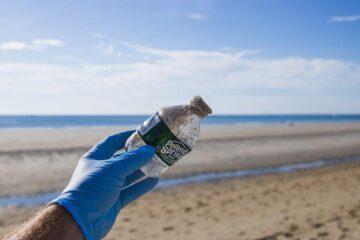Kevlar is a revolutionary material that has been used for decades in various industries. It’s strong, lightweight and versatile properties make it an ideal choice for many applications, from body armor to bulletproof vests to sails on boats. But what exactly is kevlar made of? What are the benefits and drawbacks of using Kevlar for various applications? How does the production of Kevlar impact the environment? Finally, are there any other options if Kevlar is not desired? In this blog post we’ll explore these questions while examining the uses and benefits of using Kevlar as well as some potential drawbacks associated with it.
What is Kevlar?
Kevlar, a synthetic fibre created in the 1960s by DuPont, is made up of poly-paraphenylene terephthalamide – an arrangement of molecules bound together to form a strong and resilient material. It is made from poly-paraphenylene terephthalamide, which is composed of long chains of molecules linked together to form a strong and durable material. Kevlar boasts an exceptional strength-to-mass ratio and can be employed for a multitude of purposes.
Composition of Kevlar:
The composition of Kevlar consists mainly of carbon atoms linked together with oxygen, nitrogen, hydrogen, and chlorine atoms forming para-aramid polymer chains. These are then spun into strands or fibers which are woven together to create fabric or other products depending on their intended use. The chemical structure makes it highly resistant to heat and wear while also being lightweight yet incredibly strong.
Kevlar’s molecular structure bestows upon it several advantageous properties, making it ideal for a variety of uses. From ballistic protection gear like body armor and helmets for military personnel to industrial safety equipment such as cut-resistant gloves, Kevlar is renowned for its remarkable strength-to-weight ratio; being lighter yet stronger than traditional materials like steel or aluminum at only half the weight. Additionally, automotive components like brake pads are made from Kevlar due to its superior durability while protective clothing such as fireproof suits also benefit from this synthetic fiber’s unparalleled resilience.
Kevlar is a multi-faceted material, employed for many different purposes – from protective garments to industrial functions. It’s no surprise that Kevlar has become a vital part of today’s world. Having established its versatility, let us now delve into the specific applications of Kevlar.
Uses of Kevlar
Kevlar is a synthetic fiber with an incredibly high tensile strength and heat resistance. It’s composed of long molecular chains that are linked together to form strong fibers, which makes it ideal for use in protective gear and clothing. For decades, Kevlar has been employed by the military, law enforcement personnel, firefighters, industrial workers and preppers seeking to be prepared for any eventuality.
Kevlar is utilized extensively in body armor, able to withstand the force of projectiles and shrapnel while staying lightweight enough not to cause weariness when worn for long periods. Kevlar’s lightness allows for extended periods of wear without compromising movement or causing tiredness. Kevlar is also employed in the production of helmets, gloves and other items of protective apparel such as fireproof suits donned by firefighters or those who work with hazardous materials.
Industrial Applications:
Kevlar’s unique properties make it perfect for industrial applications where extreme temperatures or heavy loads need to be handled safely. For example, Kevlar rope can withstand up to 200°C (392°F) before melting making them great for offshore oil rigs or deep sea exploration vessels where they may encounter hot water geysers during their dives. Additionally the material can also resist abrasion better than steel cables making them more suitable for certain types of winching operations as well as being able to handle heavier weights than traditional ropes would normally allow without snapping under the strain .
Kevlar is a versatile material with many uses, from protective gear to automotive applications. Despite its many benefits, certain drawbacks should be taken into account when employing Kevlar for any purpose.
Advantages and Disadvantages of Kevlar
Kevlar is a lightweight, strong synthetic fiber that was developed by DuPont in 1965. Kevlar is constructed from a series of extended molecules, termed polymers, consisting of para-aramid fibers which have an extremely high strength-to-weight ratio. Kevlar is five times stronger than steel on an equal weight basis and can absorb four times more kinetic energy than the same weight of steel before breaking.
Kevlar is renowned for its impressive durability and strength when compared to other materials, making it a desirable choice. Kevlar’s power to take in a large quantity of energy makes it suitable for protective gear, like bulletproof vests, helmets, gloves and boots that might be needed by military or law enforcement personnel when facing adversaries or criminals. Kevlar’s low weight makes it a great choice for aerospace applications, such as aircraft components or fuel tanks, which require protection from impacts and explosions while keeping the overall vehicle weight to a minimum.
Kevlar’s pros and cons must be thoughtfully weighed before opting for its application. Despite this, the environmental impact of Kevlar production and use should also be considered in order to ensure sustainable practices are being followed.
Environmental Impact of Kevlar Production and Use
Kevlar is a manufactured fiber boasting properties that render it well-suited for industrial purposes. However, its production and use can have significant environmental impacts if not managed properly.
Pollution from Manufacturing Processes:
The manufacturing process of Kevlar involves the use of hazardous chemicals and solvents which can be released into the environment during production. Pollutants released during the manufacturing process of Kevlar can lead to air contamination, water pollution and soil deterioration in surrounding regions. Additionally, workers who handle these materials may also be exposed to dangerous levels of toxins depending on their workplace safety protocols. To mitigate this risk, manufacturers should implement strict regulations regarding chemical storage and disposal as well as proper ventilation systems to protect both the environment and employees from harm.
Waste Management Issues:
As with any product produced in large quantities, there will inevitably be waste generated during the manufacturing process of Kevlar fibers. This waste includes scraps or unused pieces that cannot be recycled or reused by the manufacturer due to quality control standards or other reasons. To ensure that Kevlar fiber waste does not end up in landfills and potentially contaminate groundwater sources, companies must implement responsible disposal methods such as recycling programs or incineration plants.
Overall, Kevlar has many useful applications but its production must be carefully monitored in order to minimize potential environmental damage associated with improper handling of hazardous materials or irresponsible disposal practices. By taking proactive steps towards reducing pollution and managing waste appropriately, outdoorsmen, preppers, and hunters can help ensure a safe future for our planet while still enjoying all the benefits offered by this amazing material.
It is clear that Kevlar production and use can have a significant environmental impact. Therefore, it is important to consider the alternatives available when making decisions about materials for outdoor gear or prepper supplies.
Alternatives to Kevlar
Kevlar has attained an iconic status, renowned for its toughness and sturdiness. However, there are other alternatives available that can provide similar levels of protection while being more environmentally friendly. Aramid fibers such as Twaron and Technora are two of the most popular substitutes for Kevlar. Aramid fibers, like Twaron and Technora, have a high tensile strength which makes them suitable for protective gear such as bulletproof vests and helmets. They also offer superior heat resistance compared to traditional materials like cotton or wool, making them ideal for outdoor activities such as hunting or prepping.
Substitutes to Kevlar, like hemp or flax, can be utilized in some cases. Hemp is naturally resistant to mildew and rot so it’s perfect for clothing that needs to be exposed to the elements on a regular basis. It’s also lightweight yet strong enough to make it an excellent choice when crafting items like backpacks or tents that need extra durability without adding too much weight. Flax is another natural fiber with similar properties but tends to be slightly less durable than hemp due its lack of elasticity when wet.
Synthetic fabrics such as nylon and polyester are often employed instead of Kevlar, due to their lower cost while still offering adequate defense against scuffing, ripping, and wetness harm. Nylon is particularly useful because it offers exceptional flexibility even at low temperatures whereas polyester tends to retain its shape better over time despite being more susceptible UV radiation damage than other fabrics including nylon itself. Both types will usually require additional treatments if you want them waterproofed though this isn’t always necessary depending on your application requirements since some synthetics already come pre-treated with water repellent coatings out-of-the-box nowadays.
For outdoorsmen, preppers, and hunters who don’t want their equipment made from synthetic material but need something just as strong then these alternative options could prove invaluable. Whether you’re looking for lightness and breathability with natural fibers or robustness and flexibility with synthetic fibers, each option provides different benefits so it is important to take the time to research what best suits your specific needs before committing to any purchase decisions. Safety should always come first.
FAQs in Relation to What is Kevlar
What is Kevlar explained?
In the 1960s, DuPont created Kevlar, a synthetic fiber boasting remarkable tensile strength five times that of steel. Kevlar boasts a remarkable tensile strength, being five times more powerful than steel for the same weight. Kevlar is used for many applications including body armor, sporting goods and rope manufacturing. Its unique properties make it ideal for preppers who are looking to add extra protection or durability to their gear as well as outdoorsmen seeking a lightweight yet strong material with which they can craft outdoor equipment such as tents and tarps.
What is everything about Kevlar?
Kevlar is a high-strength synthetic fiber that has been used for decades in military and law enforcement applications. It is lightweight, durable, and heat resistant making it ideal for bulletproof vests and other protective gear. Kevlar also has strong chemical resistance properties which make it useful for creating tents, tarps, ropes, nets, as well as survival kits. Kevlar’s temperature-resistant nature makes it suitable for activities in the outdoors, such as camping or hunting, where protection from the elements is required. Kevlar is also used in the automotive and aerospace industries due to its strength and ability to absorb shock.
What is Kevlar made out of?
Kevlar is a synthetic fiber made from poly-paraphenylene terephthalamide. It is an incredibly strong and lightweight material, five times stronger than steel by weight. Kevlar has excellent heat resistance properties, making it suitable for protective gear such as bulletproof vests and helmets. Kevlar’s low heat-transfer rate makes it a great choice for items requiring durability and strength, like insulation materials, cables, ropes and more.
What about Kevlar makes it so strong?
It is incredibly strong due to its molecular structure, which consists of tightly interlocking chains that are highly resistant to stretching and tearing. Kevlar is significantly tougher than steel when considering its weight, making it a great choice for protective equipment such as bulletproof vests and helmets that require lightness yet reliable strength. Kevlar’s remarkable combination of strength, lightness, durability and malleability make it an ideal material for protective equipment.
Conclusion
It offers protection and strength with minimal weight. Despite its strength and protection benefits, Kevlar’s production and disposal has environmental consequences that must be taken into account when deciding whether to use it or an alternative such as Dyneema. Alternatives such as Dyneema are being explored in order to reduce these impacts while still providing similar levels of performance when compared to kevlar. Ultimately, the decision to utilize Kevlar or not must be made based on one’s individual requirements and preferences; however, it is essential that this choice is made after thoroughly weighing all relevant elements.
For those looking to be prepared for any emergency, BestSurvival can help you understand the importance of Kevlar and how it can protect you in dangerous situations. Investing in Kevlar gear is an essential part of ensuring your safety and security outdoors.


